Dushanbe-Pamir Dushanbe
 Bashny.Net
Bashny.Net
In August this year, my old dream has come true - I went to the Pamir. The trip was eventful, with a share of extreme sports and risk. Photos are many, about a hundred, so while I will not say "all" does not break the collection, please do not hurt and hurt almost all of my authorship. Those are not mine, I note.
So, the adventure began at the airport "Vnukovo" in Moscow city, from where we flew together with a girl-friend pamirkoy. The fact that an airline "Atlant-Soyuz" for August 7 (23.35 departure) detained, in principle, did not surprise anyone. Smog over Moscow in those days was impenetrable. However, we are more fortunate than others. We sat waiting for the departure of 6 hours, while, for example, flight passengers to Antalya (turned out to be next door in the drive), expected smoothly day.
The fun started already on the register.
Tajiks in general - Amusing people. After the announcement of registration, they are not near the rack in a queue, and surrounding them, as if afraid that will not have time on a plane. Similarly, at customs, as well, and while landing in the aircraft cabin. In this raid the men first, pushing their women to the very end. Maybe someone will say that this is not so, but I watched this with my own eyes.
We were lucky again. They found one man (Dennis introduced himself, a military surgeon), who made several attempts to regulate this chaotic crowd raging citizens. Ultimately forward had missed the women and children.
Speaking of women. Again, I notice this feature. Come they Moscow airport (just not when I noticed it, many friends told, and I found this the other night) dressed entirely in European style, but once in the store, friendly systems marching to the bathroom and change clothes there in their national dress . On his return to Moscow, history repeats itself, just rearrange the terms. T.e.posle customs control woman again friendly systems marching to the bathroom and change clothes there back in European clothes.
Many thanks to the military surgeon for attempting to build a crowd of Tajiks, as already directly at landing they began to show courtesy and skip forward women. So they behaved during the flight. The flight was calm. Before the aircraft reached Dushanbe exactly 4 hours.
= 1 =
My photo is not just a subject for your message

In Dushanbe, we arrived at 10.15 am. Sleepy like flies got to customs control. While the girl-pamirka fill your entry form, I looked around in confusion in the search for the migration profiles. Good uncle, the customs officer finally saw my movements, got me a whole two questionnaires (the second - just in case the first sudden ruin), led me to the luggage compartment (where the luggage is prepared), so rabid locals have not trampled and left to fill the paper. "How to fill - give me, I'll put an entry stamp," - said the uncle. That's how I passed the customs control.
Baggage we waited a very long time (exactly the same as, and in "Vnukovo" on the way back). It turned out in parallel from Moscow flew two flights (from "Vnukovo" and of "Domodedovo", because the luggage with them started at the same time. Suitcases Bags from our flight were delivered safely, with almost no scratches, but with the "Domodedovo" ... Those bags are not packed up at the airport, we got to Dushanbe in very poor condition: opening, cut, gutted. Maybe they were looking for explosives? unclear.
Dushanbe Airport really reminded me of Sochi airport, but not the new one, so that boast the power, and the old, which still send almost all domestic flights. Similar zagonchik, zalchik. And just at the exit surround you on all sides arrogant taxi drivers offering a lot of money to take to the end of the world.
But should move away from the airport, the prices are reduced by half, or even triple. Over 10 somoni (10 Russian rubles = 1.4459 somoni, 1 US dollar was worth 4, then 46 somoni, 1 Euro = 5, 65 somoni) we have taken to Rudaki Avenue, where she lived, our common friend.
In Dushanbe, we stayed for three days. The fact that a few days earlier in the Pamir left our friend. He gets to the bottom of the road (in Kulyab, through the upper Obi Garm and then the pass was closed) for two days instead of 20 hours due to the fact that part of the road in Vanj and Rushan districts were flooded. So we waited until the water come down.
= 2 =
Dushanbe Airport, again not my phot
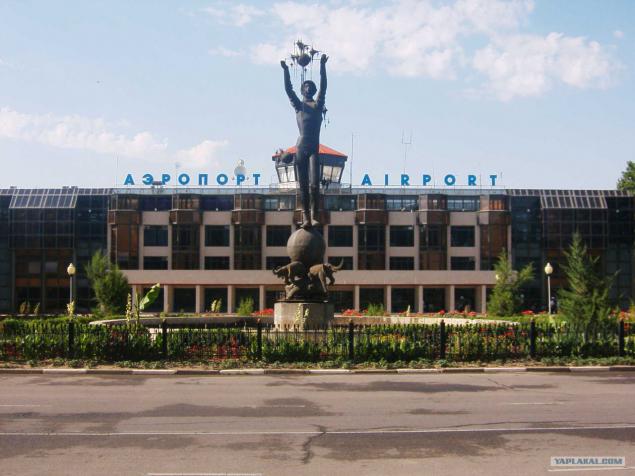
The next day we went to the familiar "Korvon" - the local market, the analogue of the Moscow Cherkizon only dirtier and not Vietnamese. Honestly - I do not advise to look, because there is a continuous low Chinese consumer goods of dubious quality. It is better to go to the "Sadbarg" (shopping center) or "Sahovat" (similar to Korvon, only cleaner and more interesting things can be found there when I was already back in Dushanbe after the Pamir).
= 3 =
photo on Rudaki Avenue, Central Avenue, Dushanbe, has photos © CatrinTheBest

It is worth noting the method of driving the locals. For them there is no traffic rules at all, only follow the rule is the principle of "food as I can and as I want." Although they sometimes miss pedestrians and occasionally stop at a red light.
= 4 =
"Poytaht" hotel near t.ts. "Sadbarg" Photo © CatrinTheBest

In "Korvon" I have terrible headache, and to "Sadbarg" we went for my nagging "want to go home to bed." As for me, it does not come - I am surprised so far.
In the evening, meet friends, sat "for coming" just walked along the avenue Rudaki and the next day decided to wait another day to learn about the registration for me and about the state of roads in the Pamirs.
= 5 =
Rudaki Avenue, Central Department Store, on the right in the course will be the presidential palace, photo © CatrinTheBest
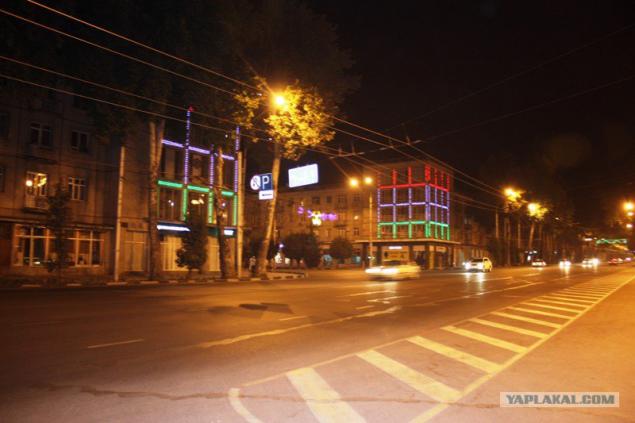
On the third day I rebelled strongly demanded to see me, Dushanbe, and that in fact is not known yet when I will bring back hard. What neighbor told me that they themselves know the city is bad. I rang familiar local girl, asked to show me something interesting in Dushanbe.
= 6 =
photo on the park in the center of Dushanbe, Rudaki, photo © CatrinTheBest

So tourist attractions Dushanbe.
Rudaki Park. Previously, it was called the Lenin Park
= 7 =
Photo © CatrinTheBest

Area of Friendship of Peoples. Former infamous Area Ozodi = Freedom. In the Soviet period it was called Lenin Square and the monument to Lenin was located here. Then in the early 90s the monument was removed and in its place a monument to Ferdowsi and the area itself was renamed Freedom Square. But in the mid-90s, she began to carry the name of the Somoni, since it was the compositional center of the monument to Ismoil Samani - the founder of the Tajik state, Samani dynasty emperor, who ruled a vast territory from the Caspian Sea to the borders of modern China in the IX-X centuries.
= 8 =
Photo © CatrinTheBest

= 9 =
Ismoil Somoni monument
Photo © CatrinTheBest
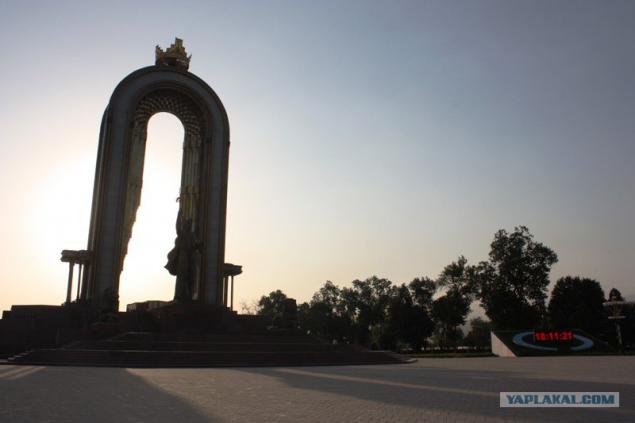
= 10 =
cinema "Jomi»
Photo © CatrinTheBest

= 11 =
The Academy of Sciences of the Republic of Tajikistan.
Founded in 1951 on the basis of the Tajik Branch of the USSR, as the Academy of Sciences of the Tajik SSR. Since 2005, the President of the Academy of Science - Academician of the Academy of Science MI Ilolov. Its first president was known in Tajikistan writer, public figure and scientist Aini.
Photo © CatrinTheBest

= 12 =
Academic Opera and Ballet Theatre. Aini
It was founded in 1940, when in Dushanbe was formed a small dance group mostly performs folk dances in operas and dramatic productions. In 1941, for the first time at the theater staged a production of the first Tajik ballet, entitled "Du Gul" ("Two Roses" or "Two flowers»).
foto © CatrinTheBest

= 13 =
Then we took a taxi and went to Victory Park in Dushanbe, which is located on the city itself. Memorial, a memorial to soldiers who died during the Great Patriotic War.
foto © CatrinTheBest
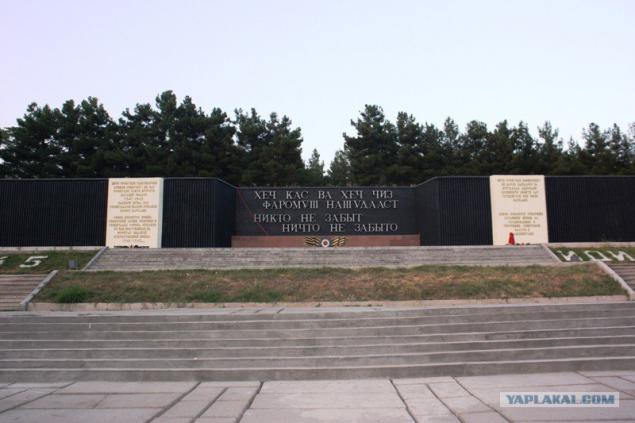
= 14 =
"Heche CAS Islands Heche cheese faromush nashudaast" - "No one is forgotten, nothing is forgotten».
foto © CatrinTheBest

= 15 =
Well, the last paragraph of my express tours of Dushanbe became an amphitheater. Beautiful place, but not brought to mind. If you equip it, the beauty of the park will not yield to Rudaki Park. However, the same hand before it, apparently do not reach.
foto © CatrinTheBest
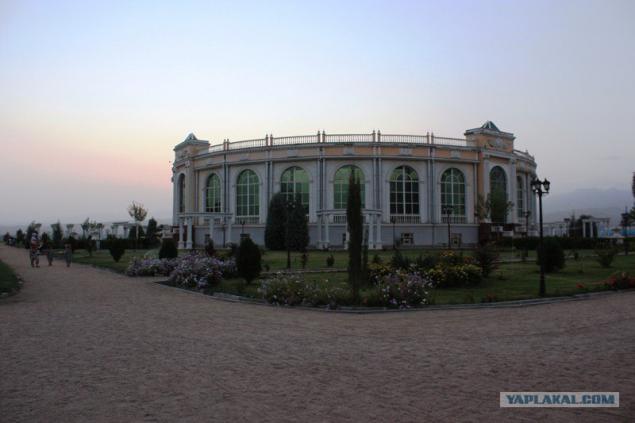
= 16 =
sunset over Dushanbe
foto © CatrinTheBest

= 17 =
Thus, the third day of his stay in Dushanbe came to an end. The next day, early in the morning we went on a jeep in the lower road through the Pamir Kulyab. The top, as mentioned earlier, at the time was closed.
foto © CatrinTheBest

= 18 =
The map shows the route that we went to the Pamir.

= 19 =
Oh, it is worth noting that all foreign nationals arriving in Dushanbe, it is necessary, within three working days to make a local OVIR registration. Just make it better there, exactly where you are going. I made out it did not, because Khorog asked for her 75 somoni and away the penalty for its lack of cost me 40 somoni. There is a difference.
foto © CatrinTheBest
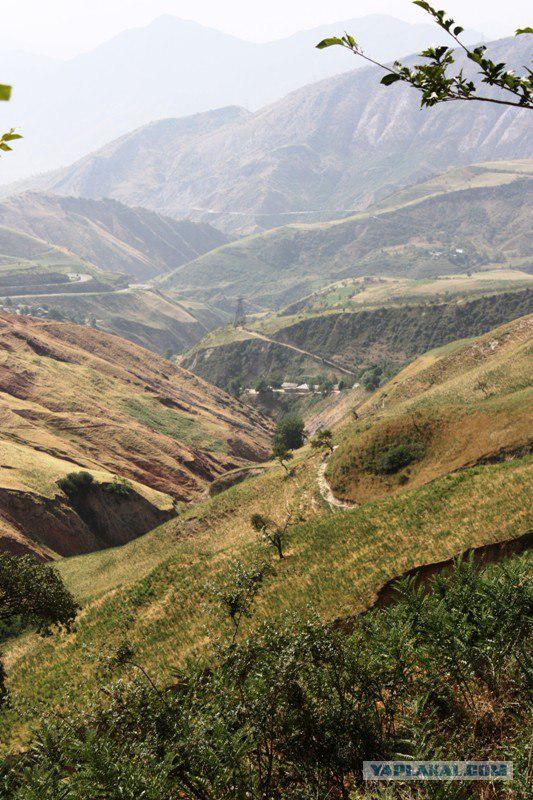
= 20 =
And there is such a thing as a pass to the border zone. I do not know how other foreigners, but citizens of the Russian Federation in the course of it is not needed, t.k.na border posts in Shuroabad (entering the border area) I have not asked him. Also I did not check and registration, and a migration card.
foto © CatrinTheBest

= 21 =
city of Nurek. Nurek hydropower plant on the well known outside the Republic of Tatarstan.
foto © CatrinTheBest

= 22 =
local vehicle brands' Ass »=)
foto © CatrinTheBest
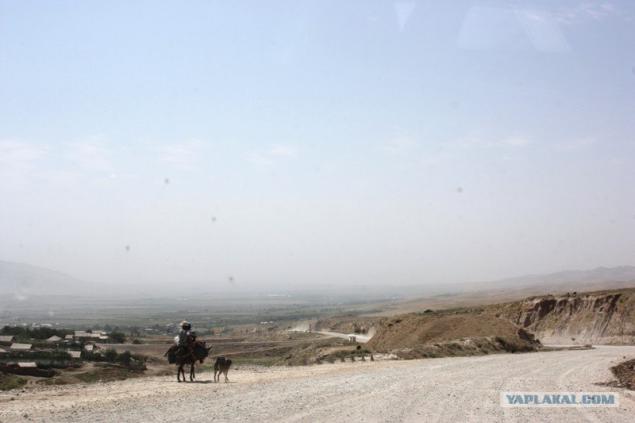
= 23 =
Now about the prices. Travel by jeep from Dushanbe to Khorog cost us 200 somoni back I already paid 280 somoni. On the way we stopped for lunch in Kulyab and dinner in Cala Khumb. The average bill per person was about 15-20 somoni (hot, salad, tea or compote).
On the way back snack stop somewhere Vanj and on the descent from the pass. Average price for lunch-dinner (pilaf / kebab, lozenges, tea) was about 15 somoni for two.
foto © CatrinTheBest
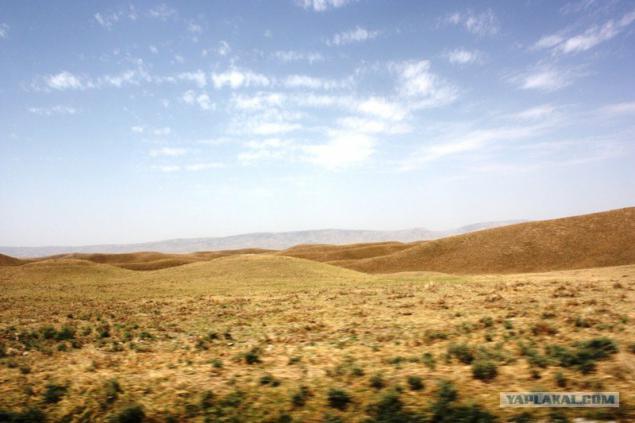
= 24 =
After Shuroabad border post further our road ran along the bank of the Panj. Most memorable - Afghanistan is actually about twenty meters from the car. It seems to be the boundary, but in fact we met only two patrol of three.
foto © CatrinTheBest
Afghanistan has the river!
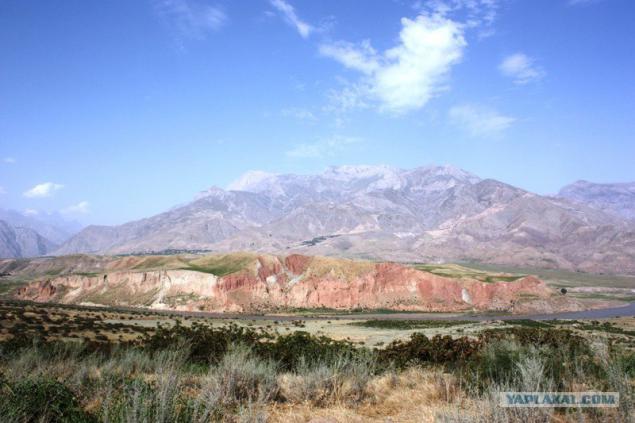
= 25 =
Another form of the Tajik border guards amused, or rather - their wide-brimmed camouflage hat, more like Panama. Somehow they are not serious they looked. Unfortunately, they could not take pictures - the camera took.
foto © CatrinTheBest
the highest mountains on the Afghan side were

= 26 =
on the other side of Afghanistan already. border transparent. it can safely cross and not to run any one pograntsy.
foto © CatrinTheBest

= 27 =
Afghan village
foto © CatrinTheBest

= 28 =
It is, perhaps, a separate stop at the local police. Even in Russia, I have not seen such atrocities.
For example, should a police post. Traffic cops stopped every car. And takes them 5 somoni only for what stopped them. It happens to the road and 50 somoni leaves, and more. If we get lucky. To find fault with everything, even the fact that the rights of the Soviet type. And it does not matter what the experience of driving a person much more than the number of years that he Gaetz lives in this world. For all time of his stay in Tajikistan, I once saw a traffic cop, who looked at the right driver (we were driving from the village where I lived, in Khorog, caught a ride), he said that no diram him not take just for that of driving experience just the same "more than the number of years that he Gaetz lives in this world».
foto © CatrinTheBest
photo - BDA booth (analogue of our traffic police)
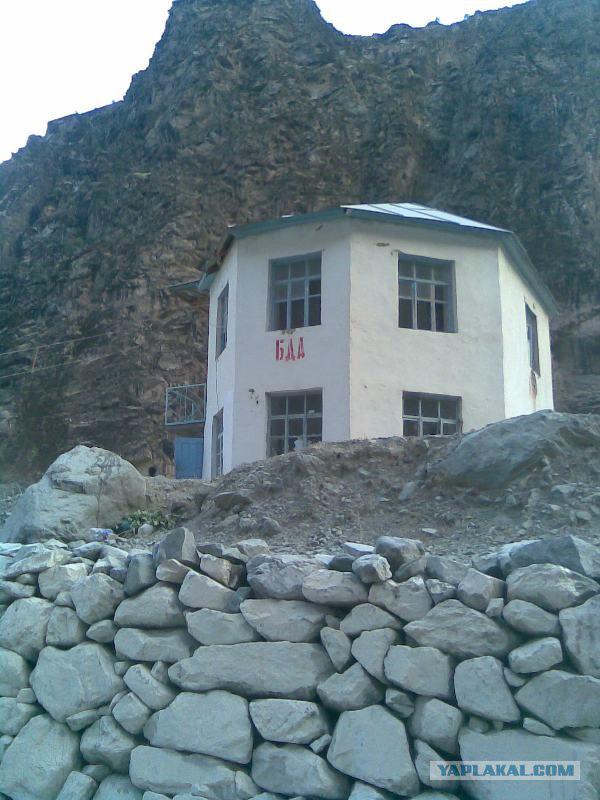
= 29 =
a total trip to the bottom (long) road took exactly day
foto © CatrinTheBest
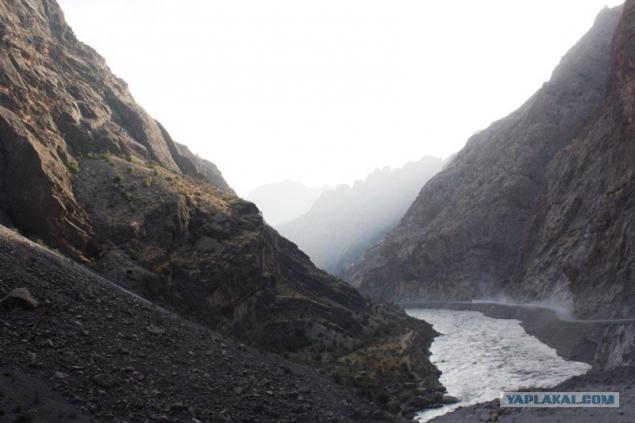
= 30 =
So, in Khorog, we arrived at 6am and immediately went to the familiar. There otmylis and lay down to sleep.
foto © CatrinTheBest
photo - Khorog, the district Hulak

= 31 =
2 weeks I stayed with friends in the village council Darmoraht, village Nishusp. Quiet and peaceful place, at the bottom of the Panj River, the river - a small Afghan village. Near the garden with awesome delicious apples, apricots, cherries, and most importantly - mulberry.
About this delicious thing is to tell more.
Mulberry or mulberry tree - a genus of plants of the mulberry family, consisting of 10-16 species of deciduous trees, common in warm temperate and subtropical zones of Asia, Africa and North America. In Russia wild species mulberry satin or feed growing in the south-west of Sakhalin island Moneron and the Kuril islands (Kunashir, Shikotan), Far East, Central District of Russia (Voronezh region), Krasnodar and Stavropol, Volgograd and Rostov region (there also called Tyutin (Don Cossack name mulberry) or Tutina, mulberry (Stavropol Territory)). Mulberry grows well in the Ukraine, Armenia, Azerbaijan and Moldova.
As a young fast-growing trees, but gradually slows its growth and rarely grows more than 10-15 m. The leaves are alternate, simple, often lobed, particularly on young shoots, toothed on the edges. The fruit - the fruit of a complex consisting of drupes, overgrown by fleshy perianth, 2-3 cm long, from red to dark purple, edible - some kinds of sweet and has a pleasant smell. Lives up to 200 years old mulberry, rarely up to 300-500.
It has edible fruit used to make the filling for pies, made of wine, vodka and soft drinks. Berries red mulberry (native to North America) and the black mulberry (native to southwest Asia) have a very strong pleasant fragrance. Berries white mulberry (originally from Asia) have an excellent smell, often characterized as "tasteless." The mature fruit contains large amounts of resveratrol is a potent plant antioxidants.
Image © Internet

= 32 =
The capital of the Gorno-Badakhshan region - the city of Khorog (translated it means "the place where it grows a lot of thorns"), probably has no analogues in the entire Central Asia. This town, which is home to about 30,000 people, is located at an altitude of 2,600 meters above sea level on steep terraces that slowly descend to the tumultuous dirty leaden waters of the river Gunt. Here, the river merges with another mountain stream - Shahdara river, and after that the boundary between the neighboring Afghanistan and Tajikistan held on the river Panj.
foto © CatrinTheBest

= 33 =
If you look at Khorog bird's-eye view, we can see that it actually has only two "full" street, one of which still bears the name of Lenin (the former founder of the Soviet Union throughout the autonomous province established several monuments and busts) where it is located the main buildings and landmarks.
Very original works in Khorog local police. In the city center, on the main crossroads near the only traffic light, which actually does not work, it is about 5 to about 10 cops, the main purpose of which - to stop the machine of local acquaintances and friends to greet them in public.
foto © CatrinTheBest
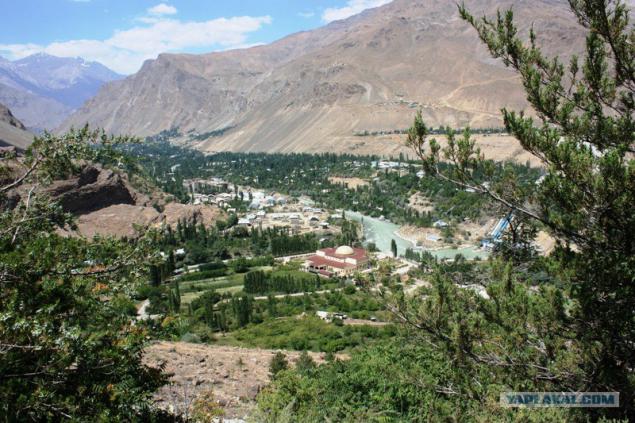
= 34 =
The very appearance of Khorog is connected with the long struggle of the Russian Empire and Britain for the right to take over the local people, and farther to the south were Russian soldiers and merchants, the more often they are faced with their British competitors. As a result, in 1895 there was a situation in which, and St. Petersburg, and London were interested in some kind of demarcation of land, lying in the foothills of the Pamir and Hindu Kush, and the natural boundary of their aspirations and become capricious, with a lot of the rapid whirlpool and dangerous rapids river Panj.
foto © CatrinTheBest
pictured - in the center of the park, called Chorbog

= 35 =
It was then on the banks of the Panj River and there was a small border village, which consisted of three houses and military barracks. Russian soldiers came here from Kyrgyzstan (then the city of Osh, to which from Khorog more than 700 kilometers across the Pamir high passes), passing through the snow-covered gorges, located at an altitude of more than 4 thousand meters, and not having in possession any precise maps of these places, or concepts what exactly will be their border mission.
foto © CatrinTheBest
photo - Chorbog

= 36 =
Of course this place is, once lying at the crossroads of important caravan routes, and which today houses a modern Khorog, has been mentioned in historical documents dating back to the 10th century. It is here that intersect numerous trade routes, which were from China and India to West Asia and to the shores of the Khazar (Caspian) sea.
foto © CatrinTheBest
Lombardy poplars in Chorbog

= 37 =
Get in those days to Khorog could only goat winding paths, all goods were transported in Khorog on the backs of camels and mules, and the road from Osh to Khorog through the snow-covered mountain passes of Pamir takes several weeks.
foto © CatrinTheBest
pictured himself author

= 38 =
So.
Source:
So, the adventure began at the airport "Vnukovo" in Moscow city, from where we flew together with a girl-friend pamirkoy. The fact that an airline "Atlant-Soyuz" for August 7 (23.35 departure) detained, in principle, did not surprise anyone. Smog over Moscow in those days was impenetrable. However, we are more fortunate than others. We sat waiting for the departure of 6 hours, while, for example, flight passengers to Antalya (turned out to be next door in the drive), expected smoothly day.
The fun started already on the register.
Tajiks in general - Amusing people. After the announcement of registration, they are not near the rack in a queue, and surrounding them, as if afraid that will not have time on a plane. Similarly, at customs, as well, and while landing in the aircraft cabin. In this raid the men first, pushing their women to the very end. Maybe someone will say that this is not so, but I watched this with my own eyes.
We were lucky again. They found one man (Dennis introduced himself, a military surgeon), who made several attempts to regulate this chaotic crowd raging citizens. Ultimately forward had missed the women and children.
Speaking of women. Again, I notice this feature. Come they Moscow airport (just not when I noticed it, many friends told, and I found this the other night) dressed entirely in European style, but once in the store, friendly systems marching to the bathroom and change clothes there in their national dress . On his return to Moscow, history repeats itself, just rearrange the terms. T.e.posle customs control woman again friendly systems marching to the bathroom and change clothes there back in European clothes.
Many thanks to the military surgeon for attempting to build a crowd of Tajiks, as already directly at landing they began to show courtesy and skip forward women. So they behaved during the flight. The flight was calm. Before the aircraft reached Dushanbe exactly 4 hours.
= 1 =
My photo is not just a subject for your message

In Dushanbe, we arrived at 10.15 am. Sleepy like flies got to customs control. While the girl-pamirka fill your entry form, I looked around in confusion in the search for the migration profiles. Good uncle, the customs officer finally saw my movements, got me a whole two questionnaires (the second - just in case the first sudden ruin), led me to the luggage compartment (where the luggage is prepared), so rabid locals have not trampled and left to fill the paper. "How to fill - give me, I'll put an entry stamp," - said the uncle. That's how I passed the customs control.
Baggage we waited a very long time (exactly the same as, and in "Vnukovo" on the way back). It turned out in parallel from Moscow flew two flights (from "Vnukovo" and of "Domodedovo", because the luggage with them started at the same time. Suitcases Bags from our flight were delivered safely, with almost no scratches, but with the "Domodedovo" ... Those bags are not packed up at the airport, we got to Dushanbe in very poor condition: opening, cut, gutted. Maybe they were looking for explosives? unclear.
Dushanbe Airport really reminded me of Sochi airport, but not the new one, so that boast the power, and the old, which still send almost all domestic flights. Similar zagonchik, zalchik. And just at the exit surround you on all sides arrogant taxi drivers offering a lot of money to take to the end of the world.
But should move away from the airport, the prices are reduced by half, or even triple. Over 10 somoni (10 Russian rubles = 1.4459 somoni, 1 US dollar was worth 4, then 46 somoni, 1 Euro = 5, 65 somoni) we have taken to Rudaki Avenue, where she lived, our common friend.
In Dushanbe, we stayed for three days. The fact that a few days earlier in the Pamir left our friend. He gets to the bottom of the road (in Kulyab, through the upper Obi Garm and then the pass was closed) for two days instead of 20 hours due to the fact that part of the road in Vanj and Rushan districts were flooded. So we waited until the water come down.
= 2 =
Dushanbe Airport, again not my phot

The next day we went to the familiar "Korvon" - the local market, the analogue of the Moscow Cherkizon only dirtier and not Vietnamese. Honestly - I do not advise to look, because there is a continuous low Chinese consumer goods of dubious quality. It is better to go to the "Sadbarg" (shopping center) or "Sahovat" (similar to Korvon, only cleaner and more interesting things can be found there when I was already back in Dushanbe after the Pamir).
= 3 =
photo on Rudaki Avenue, Central Avenue, Dushanbe, has photos © CatrinTheBest

It is worth noting the method of driving the locals. For them there is no traffic rules at all, only follow the rule is the principle of "food as I can and as I want." Although they sometimes miss pedestrians and occasionally stop at a red light.
= 4 =
"Poytaht" hotel near t.ts. "Sadbarg" Photo © CatrinTheBest

In "Korvon" I have terrible headache, and to "Sadbarg" we went for my nagging "want to go home to bed." As for me, it does not come - I am surprised so far.
In the evening, meet friends, sat "for coming" just walked along the avenue Rudaki and the next day decided to wait another day to learn about the registration for me and about the state of roads in the Pamirs.
= 5 =
Rudaki Avenue, Central Department Store, on the right in the course will be the presidential palace, photo © CatrinTheBest

On the third day I rebelled strongly demanded to see me, Dushanbe, and that in fact is not known yet when I will bring back hard. What neighbor told me that they themselves know the city is bad. I rang familiar local girl, asked to show me something interesting in Dushanbe.
= 6 =
photo on the park in the center of Dushanbe, Rudaki, photo © CatrinTheBest

So tourist attractions Dushanbe.
Rudaki Park. Previously, it was called the Lenin Park
= 7 =
Photo © CatrinTheBest

Area of Friendship of Peoples. Former infamous Area Ozodi = Freedom. In the Soviet period it was called Lenin Square and the monument to Lenin was located here. Then in the early 90s the monument was removed and in its place a monument to Ferdowsi and the area itself was renamed Freedom Square. But in the mid-90s, she began to carry the name of the Somoni, since it was the compositional center of the monument to Ismoil Samani - the founder of the Tajik state, Samani dynasty emperor, who ruled a vast territory from the Caspian Sea to the borders of modern China in the IX-X centuries.
= 8 =
Photo © CatrinTheBest

= 9 =
Ismoil Somoni monument
Photo © CatrinTheBest

= 10 =
cinema "Jomi»
Photo © CatrinTheBest

= 11 =
The Academy of Sciences of the Republic of Tajikistan.
Founded in 1951 on the basis of the Tajik Branch of the USSR, as the Academy of Sciences of the Tajik SSR. Since 2005, the President of the Academy of Science - Academician of the Academy of Science MI Ilolov. Its first president was known in Tajikistan writer, public figure and scientist Aini.
Photo © CatrinTheBest

= 12 =
Academic Opera and Ballet Theatre. Aini
It was founded in 1940, when in Dushanbe was formed a small dance group mostly performs folk dances in operas and dramatic productions. In 1941, for the first time at the theater staged a production of the first Tajik ballet, entitled "Du Gul" ("Two Roses" or "Two flowers»).
foto © CatrinTheBest

= 13 =
Then we took a taxi and went to Victory Park in Dushanbe, which is located on the city itself. Memorial, a memorial to soldiers who died during the Great Patriotic War.
foto © CatrinTheBest

= 14 =
"Heche CAS Islands Heche cheese faromush nashudaast" - "No one is forgotten, nothing is forgotten».
foto © CatrinTheBest

= 15 =
Well, the last paragraph of my express tours of Dushanbe became an amphitheater. Beautiful place, but not brought to mind. If you equip it, the beauty of the park will not yield to Rudaki Park. However, the same hand before it, apparently do not reach.
foto © CatrinTheBest

= 16 =
sunset over Dushanbe
foto © CatrinTheBest

= 17 =
Thus, the third day of his stay in Dushanbe came to an end. The next day, early in the morning we went on a jeep in the lower road through the Pamir Kulyab. The top, as mentioned earlier, at the time was closed.
foto © CatrinTheBest

= 18 =
The map shows the route that we went to the Pamir.

= 19 =
Oh, it is worth noting that all foreign nationals arriving in Dushanbe, it is necessary, within three working days to make a local OVIR registration. Just make it better there, exactly where you are going. I made out it did not, because Khorog asked for her 75 somoni and away the penalty for its lack of cost me 40 somoni. There is a difference.
foto © CatrinTheBest

= 20 =
And there is such a thing as a pass to the border zone. I do not know how other foreigners, but citizens of the Russian Federation in the course of it is not needed, t.k.na border posts in Shuroabad (entering the border area) I have not asked him. Also I did not check and registration, and a migration card.
foto © CatrinTheBest

= 21 =
city of Nurek. Nurek hydropower plant on the well known outside the Republic of Tatarstan.
foto © CatrinTheBest

= 22 =
local vehicle brands' Ass »=)
foto © CatrinTheBest

= 23 =
Now about the prices. Travel by jeep from Dushanbe to Khorog cost us 200 somoni back I already paid 280 somoni. On the way we stopped for lunch in Kulyab and dinner in Cala Khumb. The average bill per person was about 15-20 somoni (hot, salad, tea or compote).
On the way back snack stop somewhere Vanj and on the descent from the pass. Average price for lunch-dinner (pilaf / kebab, lozenges, tea) was about 15 somoni for two.
foto © CatrinTheBest

= 24 =
After Shuroabad border post further our road ran along the bank of the Panj. Most memorable - Afghanistan is actually about twenty meters from the car. It seems to be the boundary, but in fact we met only two patrol of three.
foto © CatrinTheBest
Afghanistan has the river!

= 25 =
Another form of the Tajik border guards amused, or rather - their wide-brimmed camouflage hat, more like Panama. Somehow they are not serious they looked. Unfortunately, they could not take pictures - the camera took.
foto © CatrinTheBest
the highest mountains on the Afghan side were

= 26 =
on the other side of Afghanistan already. border transparent. it can safely cross and not to run any one pograntsy.
foto © CatrinTheBest

= 27 =
Afghan village
foto © CatrinTheBest

= 28 =
It is, perhaps, a separate stop at the local police. Even in Russia, I have not seen such atrocities.
For example, should a police post. Traffic cops stopped every car. And takes them 5 somoni only for what stopped them. It happens to the road and 50 somoni leaves, and more. If we get lucky. To find fault with everything, even the fact that the rights of the Soviet type. And it does not matter what the experience of driving a person much more than the number of years that he Gaetz lives in this world. For all time of his stay in Tajikistan, I once saw a traffic cop, who looked at the right driver (we were driving from the village where I lived, in Khorog, caught a ride), he said that no diram him not take just for that of driving experience just the same "more than the number of years that he Gaetz lives in this world».
foto © CatrinTheBest
photo - BDA booth (analogue of our traffic police)

= 29 =
a total trip to the bottom (long) road took exactly day
foto © CatrinTheBest

= 30 =
So, in Khorog, we arrived at 6am and immediately went to the familiar. There otmylis and lay down to sleep.
foto © CatrinTheBest
photo - Khorog, the district Hulak

= 31 =
2 weeks I stayed with friends in the village council Darmoraht, village Nishusp. Quiet and peaceful place, at the bottom of the Panj River, the river - a small Afghan village. Near the garden with awesome delicious apples, apricots, cherries, and most importantly - mulberry.
About this delicious thing is to tell more.
Mulberry or mulberry tree - a genus of plants of the mulberry family, consisting of 10-16 species of deciduous trees, common in warm temperate and subtropical zones of Asia, Africa and North America. In Russia wild species mulberry satin or feed growing in the south-west of Sakhalin island Moneron and the Kuril islands (Kunashir, Shikotan), Far East, Central District of Russia (Voronezh region), Krasnodar and Stavropol, Volgograd and Rostov region (there also called Tyutin (Don Cossack name mulberry) or Tutina, mulberry (Stavropol Territory)). Mulberry grows well in the Ukraine, Armenia, Azerbaijan and Moldova.
As a young fast-growing trees, but gradually slows its growth and rarely grows more than 10-15 m. The leaves are alternate, simple, often lobed, particularly on young shoots, toothed on the edges. The fruit - the fruit of a complex consisting of drupes, overgrown by fleshy perianth, 2-3 cm long, from red to dark purple, edible - some kinds of sweet and has a pleasant smell. Lives up to 200 years old mulberry, rarely up to 300-500.
It has edible fruit used to make the filling for pies, made of wine, vodka and soft drinks. Berries red mulberry (native to North America) and the black mulberry (native to southwest Asia) have a very strong pleasant fragrance. Berries white mulberry (originally from Asia) have an excellent smell, often characterized as "tasteless." The mature fruit contains large amounts of resveratrol is a potent plant antioxidants.
Image © Internet

= 32 =
The capital of the Gorno-Badakhshan region - the city of Khorog (translated it means "the place where it grows a lot of thorns"), probably has no analogues in the entire Central Asia. This town, which is home to about 30,000 people, is located at an altitude of 2,600 meters above sea level on steep terraces that slowly descend to the tumultuous dirty leaden waters of the river Gunt. Here, the river merges with another mountain stream - Shahdara river, and after that the boundary between the neighboring Afghanistan and Tajikistan held on the river Panj.
foto © CatrinTheBest

= 33 =
If you look at Khorog bird's-eye view, we can see that it actually has only two "full" street, one of which still bears the name of Lenin (the former founder of the Soviet Union throughout the autonomous province established several monuments and busts) where it is located the main buildings and landmarks.
Very original works in Khorog local police. In the city center, on the main crossroads near the only traffic light, which actually does not work, it is about 5 to about 10 cops, the main purpose of which - to stop the machine of local acquaintances and friends to greet them in public.
foto © CatrinTheBest

= 34 =
The very appearance of Khorog is connected with the long struggle of the Russian Empire and Britain for the right to take over the local people, and farther to the south were Russian soldiers and merchants, the more often they are faced with their British competitors. As a result, in 1895 there was a situation in which, and St. Petersburg, and London were interested in some kind of demarcation of land, lying in the foothills of the Pamir and Hindu Kush, and the natural boundary of their aspirations and become capricious, with a lot of the rapid whirlpool and dangerous rapids river Panj.
foto © CatrinTheBest
pictured - in the center of the park, called Chorbog

= 35 =
It was then on the banks of the Panj River and there was a small border village, which consisted of three houses and military barracks. Russian soldiers came here from Kyrgyzstan (then the city of Osh, to which from Khorog more than 700 kilometers across the Pamir high passes), passing through the snow-covered gorges, located at an altitude of more than 4 thousand meters, and not having in possession any precise maps of these places, or concepts what exactly will be their border mission.
foto © CatrinTheBest
photo - Chorbog

= 36 =
Of course this place is, once lying at the crossroads of important caravan routes, and which today houses a modern Khorog, has been mentioned in historical documents dating back to the 10th century. It is here that intersect numerous trade routes, which were from China and India to West Asia and to the shores of the Khazar (Caspian) sea.
foto © CatrinTheBest
Lombardy poplars in Chorbog

= 37 =
Get in those days to Khorog could only goat winding paths, all goods were transported in Khorog on the backs of camels and mules, and the road from Osh to Khorog through the snow-covered mountain passes of Pamir takes several weeks.
foto © CatrinTheBest
pictured himself author

= 38 =
So.
Source:
Tags
See also
Interesting
Phone printer
Journey to the WHA
Channel Tunnel
Retro bike (31 pics + text)
Bright people in 2011
Retro large (31 pics + text)

















